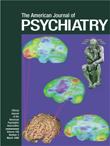Professor Malmquist of the University of Minnesota has woven together diverse perspectives about homicide, the ultimate form of human violence, into a readable single tome. Unlike past books on homicide, Malmquist’s takes a biopsychosocial approach, which more accurately depicts this phenomenon than does a single viewpoint. Malmquist synopsizes contributions from epidemiological, biological, sociological, and legal perspectives as a backdrop to in-depth exploration of individual psychopathological conditions that heighten an individual’s risk for committing homicide. Unlike other many other publications on homicide, this book does not restrict itself to exploring homicide exclusively; it covers the broader topic of homicidal violence. This distinction should not be underappreciated, as Malmquist so aptly notes, because the path of the bullet determines whether a homicide occurs.
Malmquist recounts the psychodynamics of psychotic, borderline, dependent, narcissistic, masochistic, and depressed individuals. Embedded in these psychopathologies are the seeds for homicidal violence. Although he cautions that individual psychopathology alone is not a sufficient condition for homicidal violence, its interaction with other factors can progress to homicide. Psychotic, borderline, and narcissistic conditions have long been recognized as risk factors for violence, but Malmquist’s chapters on dependent, masochistic, and depressed individuals focus on conditions that are less often considered by clinicians to pose a homicidal violence risk. Malmquist describes an important example of how a psychotherapist’s misguided statement to a patient can be readily misconstrued as permission to kill. This book can serve as a useful guide for all psychotherapists to avoid such deadly errors.
Malmquist also tackles three highly visible media topics related to homicide. His examination of the battered spouse syndrome from both psychiatric and legal perspectives provides a succinct yet comprehensive exploration of this controversial topic. The chapters on juvenile homicide and sexual killing are up-to-date compilations on these subjects.
The book is well written and well referenced. Case examples are sprinkled throughout the text and provide cogent illustrations of the theoretical material. There is perhaps one misstep that could be easily remedied in the next edition. Chapter 3 lacks any discussion of delusional disorders, even though it is promised in the chapter title as well as in one subheading (p. 97).
Malmquist’s book will have wide appeal for readers at all levels of clinical knowledge and expertise. For general psychiatrists, other mental health professionals, and those with an academic or clinical interest in violence, this book is highly recommended. The reader will receive a concise but comprehensive review of relevant biopsychological information along with a solid grounding in recent advancements in public health, sociological, and legal knowledge to permit a multimodal understanding of this growing public health menace. For the seasoned forensic psychiatrist, Malmquist’s book synthesizes the current literature on homicide in one convenient place. Readers who crave more can use this book as a point of departure for further exploration.

